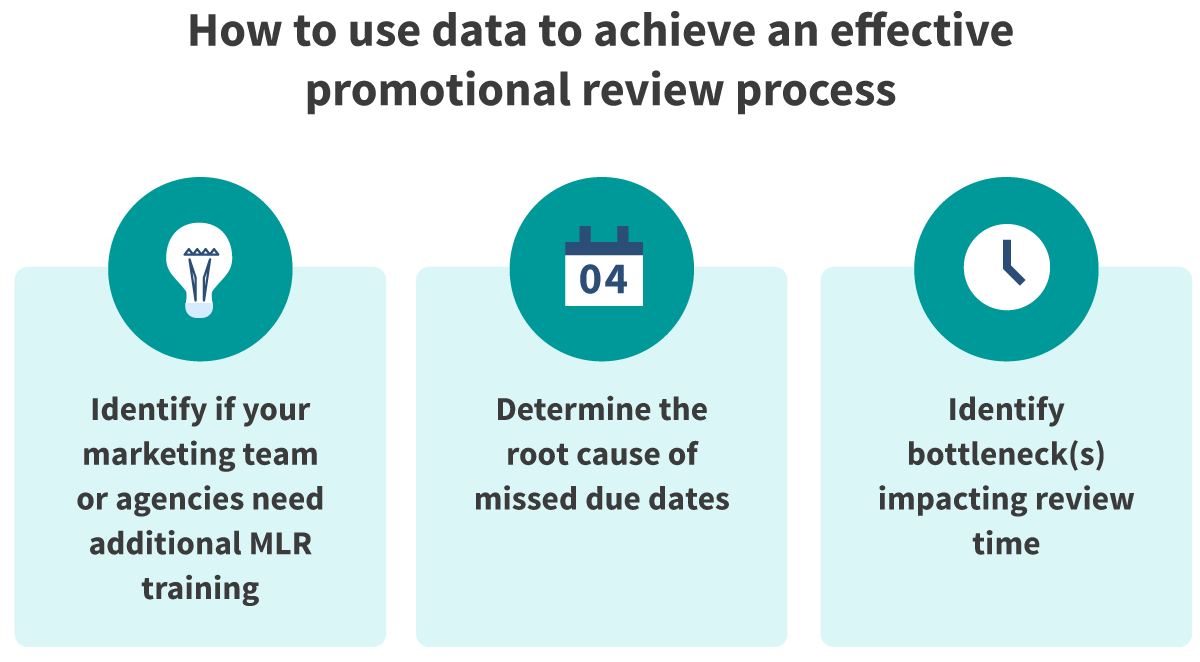Leveraging data can be an extremely valuable tool for determining if your marketing team or agencies need additional MLR training. Training needs could include process alignment/understanding of your SOPs or how to substantiate claims appropriately. The key performance indicators (KPIs) that can help you identify training opportunities include:
- average number of circulations – does content get approved on the first pass or take multiple rounds before final approval?
- average time needed for incorporating feedback – how long does it take to incorporate feedback to align with regulations?
- percentage of votes that denote amendments or changes needed – how many times does a piece of content from a certain department get requests for amendments?
By considering the KPIs listed above, your organization can not only identify where additional training is needed, but can also help you improve the quality of content submitted for review. The end result? An aligned promotional review committee and faster speed to market.
Determine the root cause of missed due dates
Meeting your commercial goals can be incredibly difficult if your promotional review team is consistently missing due dates. Missed due dates also exacerbate team frustration if you have a service level agreement (SLA) around content review and approval times.
One KPI to analyze in determining the cause of missed due dates is the percentage of documents completed by their due date. How often are you successful in completing content reviews by their assigned due date? Are there any trends in the type of content that is meeting or missing these goals?
Examining these trends will help you determine if you’re allocating enough time towards a specific type of content or if there are other factors that are preventing you from meeting deadlines. Understanding the root cause of due dates will also reveal if you need to revise your SLAs to be more realistic, which can increase the satisfaction of the review team.
Identify bottleneck(s) impacting review time
If you’re concerned that one group or individual is taking longer to get through reviews than others, use your promotional review data to identify those bottlenecks.
Some KPIs that are helpful to identify blockers include:
- average review time,
- average job duration, and
- the average task time by user.
Considering how review times vary by user, task, and job type will help you zero in on hold-ups to your promotional review process and inform necessary process improvements.
Using data to optimize your promotional review process
Data is one of the cornerstones of promotional review. The more familiar you are with your MLR process data, the more equipped you’ll be to drive improvements that will lead to effectiveness, efficiency, and satisfaction. Ideally, your MLR review solution will help provide these metrics with turnkey, easy-to-use reporting.
Interested in learning more about what a “good” promotional review process looks like? Download our benchmarks report to get industry standards on the promotional review process.
Interested in learning about a promotional review solution that provides out of the box process data? Schedule a demo with one of our experts.



